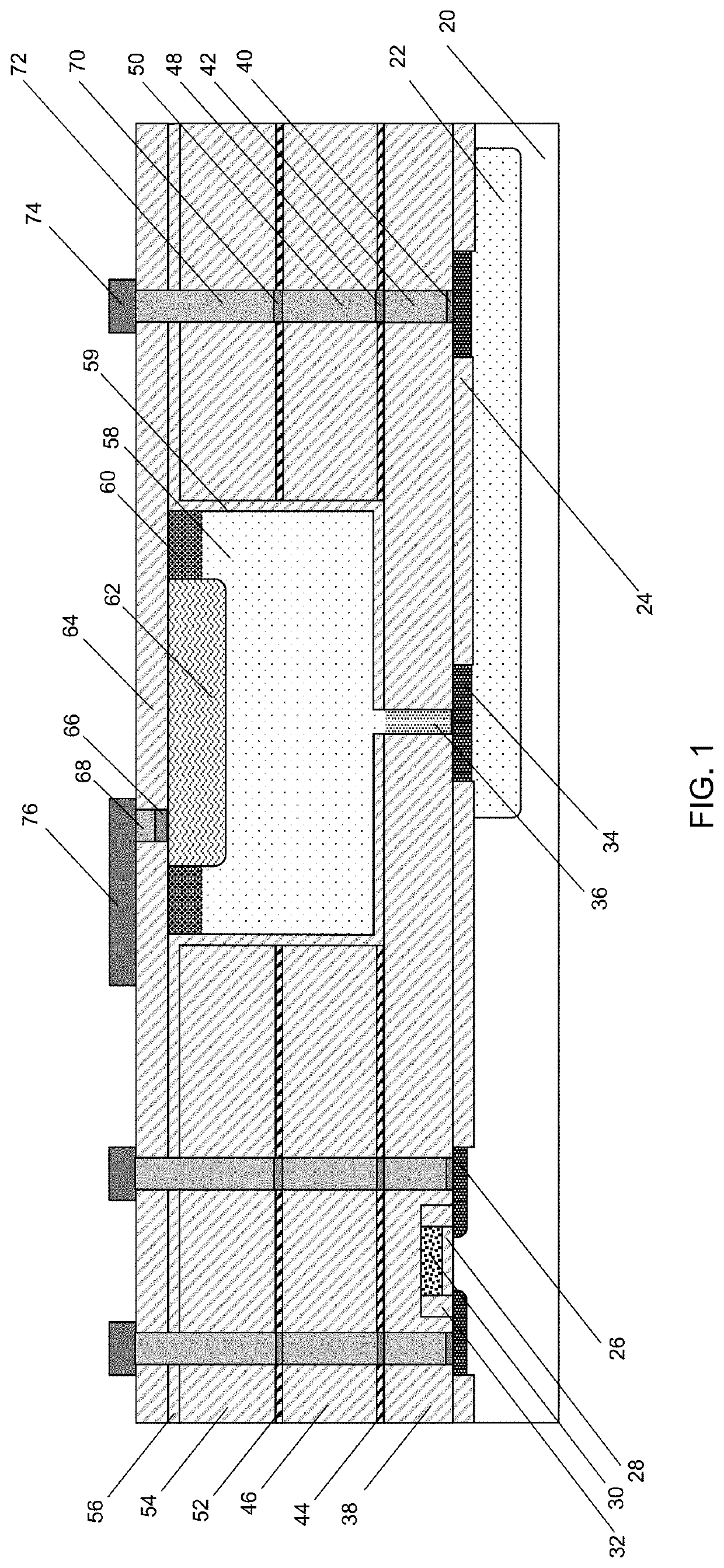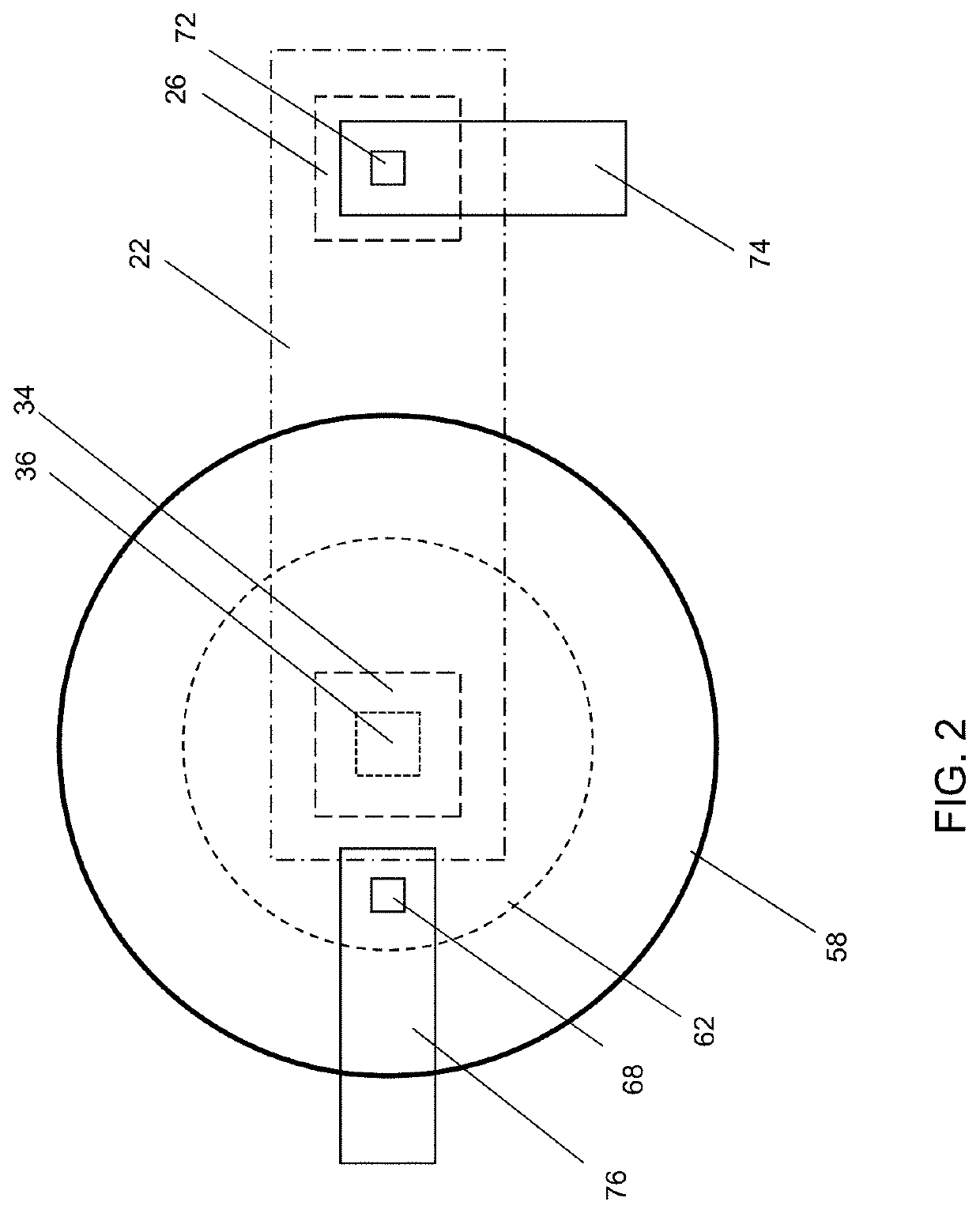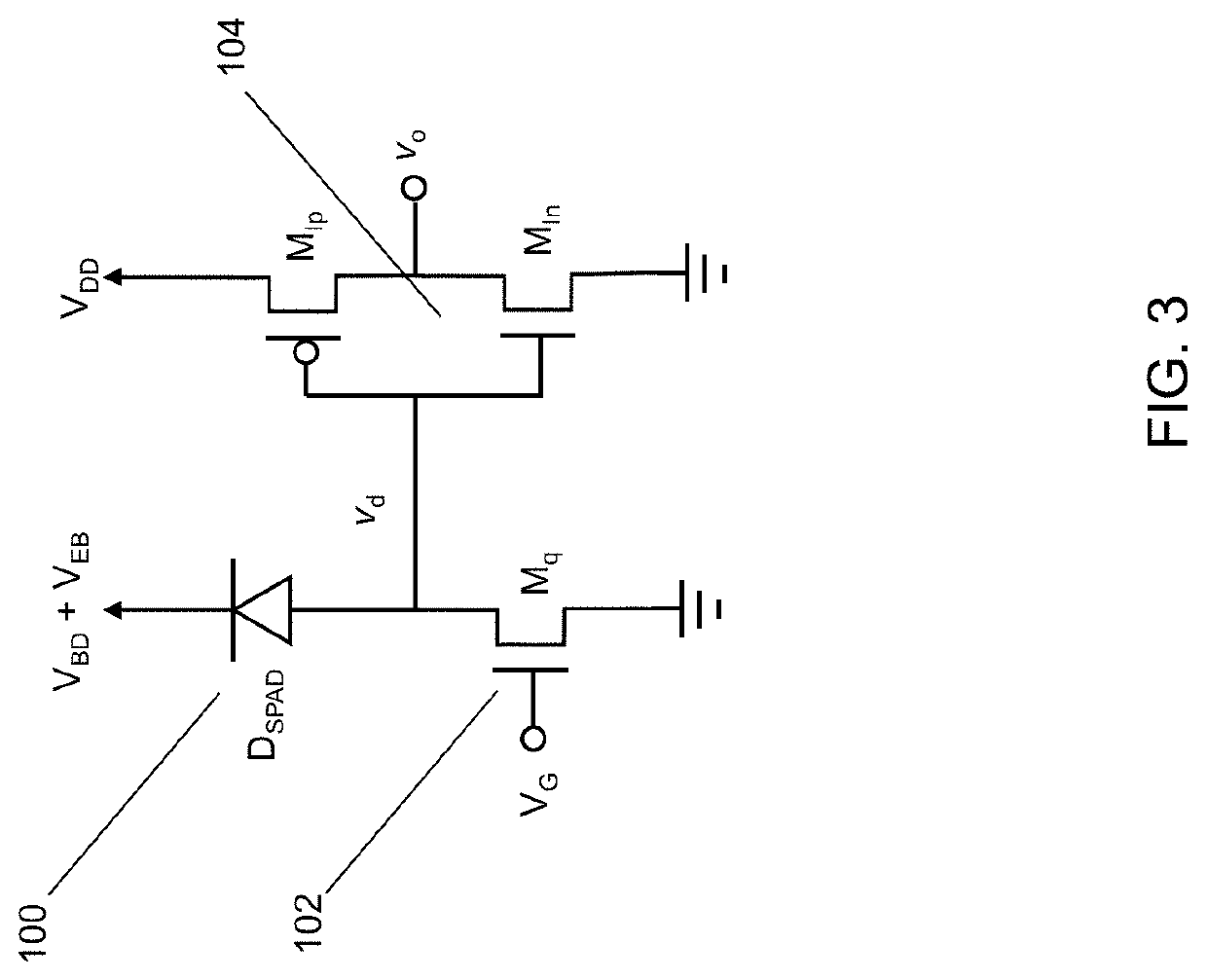Visible-to-Longwave Infrared Single Photon Avalanche Photodetector on Silicon
a single-photon avalanche and photodetector technology, applied in the direction of diodes, semiconductor devices, radio-controlled devices, etc., can solve the problems of bump bonding requirement, high reliability, and inability to focus, so as to reduce timing jitter, reduce reverse leakage current, and high fill factor
- Summary
- Abstract
- Description
- Claims
- Application Information
AI Technical Summary
Benefits of technology
Problems solved by technology
Method used
Image
Examples
fourth embodiment
[0016]Three device structures are disclosed to produce a high performance SPAD in embodiments of the present invention. A fourth embodiment describes opaque elements added around the periphery of the device to prevent cross-talk between pixels. Two of the device structures differ in their placement of the heavily doped p-type region relative to the dielectric isolation. The third device employs a separate absorption and multiplication (SAM) structure using different materials for each region. To form the important doped regions of the Ge SPAD device, ion implantation and subsequent annealing of the resulting damage may be used as well known to those skilled in the art. To protect the sensitive semiconductor surface from contamination during photolithography and ion implantation steps, a thin screen oxide may be deposited on the single crystal Ge surface. Blanket phosphorous implants without any photolithographic patterning ensure the entire Ge region above the seed trench region is ...
first embodiment
[0017]The first embodiment employs four p-type implants to form the SPAD anode to create a high fill factor device. To make this SPAD, two p-type blanket implants are performed without photolithographic patterning to span a region at the top of the device to all the dielectrically isolated edges. Next, two more p-type implants are performed with a circular or near-circular lithographically formed pattern centered within the single crystal grown region. These implants have a higher dose and extend deeper into the device than the previous implants and define a perimeter of the multiplication region of the device. The multiplication region of the device extends below the p-type implants into the semiconductor region. The p-n junction of this embodiment intersects with the oxide isolation sidewall defining the nearly defect free grown region. The electric field at the breakdown voltage is high in the central region and is immediately reduced at the edge of the p-type doped region define...
third embodiment
[0020]our invention is an avalanche photodiode structure that uses the dislocation free semiconducting region to form a multiplication zone and an epitaxial layer of a smaller bandgap material subsequently grown on top to serve as an absorptive layer. The resulting separate absorption and multiplication (SAM) structure permits the depletion region to exist primarily within the larger bandgap material thus reducing the reverse leakage current. The separate absorption layer decreases timing jitter since electron-hole pairs are created almost exclusively within that layer. This structure will also serve as a detecting element even if it is not biased into breakdown for certain epitaxial layer compositions as may be useful for MWIR and LWIR imaging.
[0021]Our SPAD design allows a high fill factor providing for a high PDE in the device. The SPAD designs according to our invention keep DCR low by making sure many surface generated dark carriers are collected in areas of the device with int...
PUM
 Login to View More
Login to View More Abstract
Description
Claims
Application Information
 Login to View More
Login to View More - R&D
- Intellectual Property
- Life Sciences
- Materials
- Tech Scout
- Unparalleled Data Quality
- Higher Quality Content
- 60% Fewer Hallucinations
Browse by: Latest US Patents, China's latest patents, Technical Efficacy Thesaurus, Application Domain, Technology Topic, Popular Technical Reports.
© 2025 PatSnap. All rights reserved.Legal|Privacy policy|Modern Slavery Act Transparency Statement|Sitemap|About US| Contact US: help@patsnap.com



